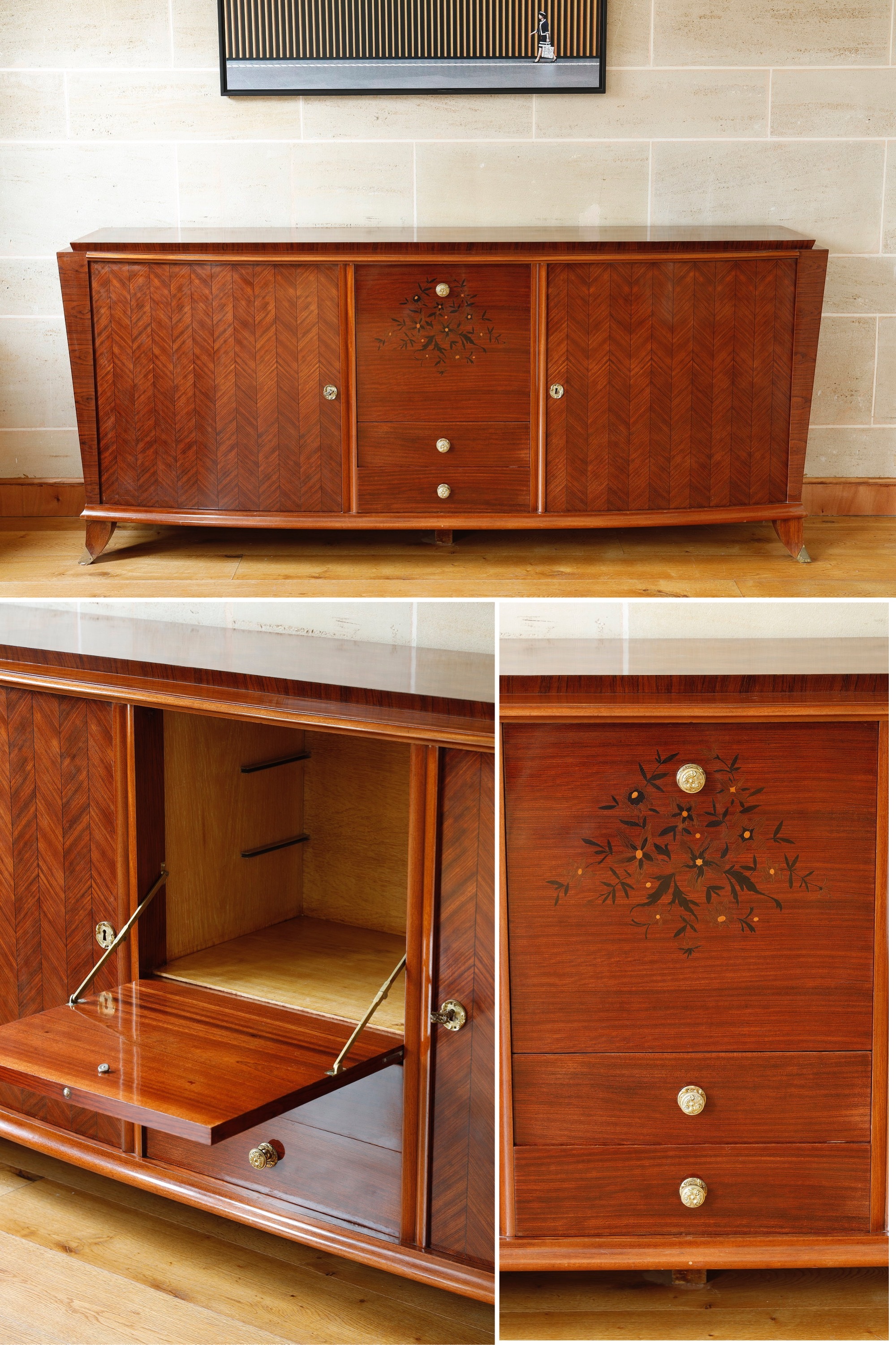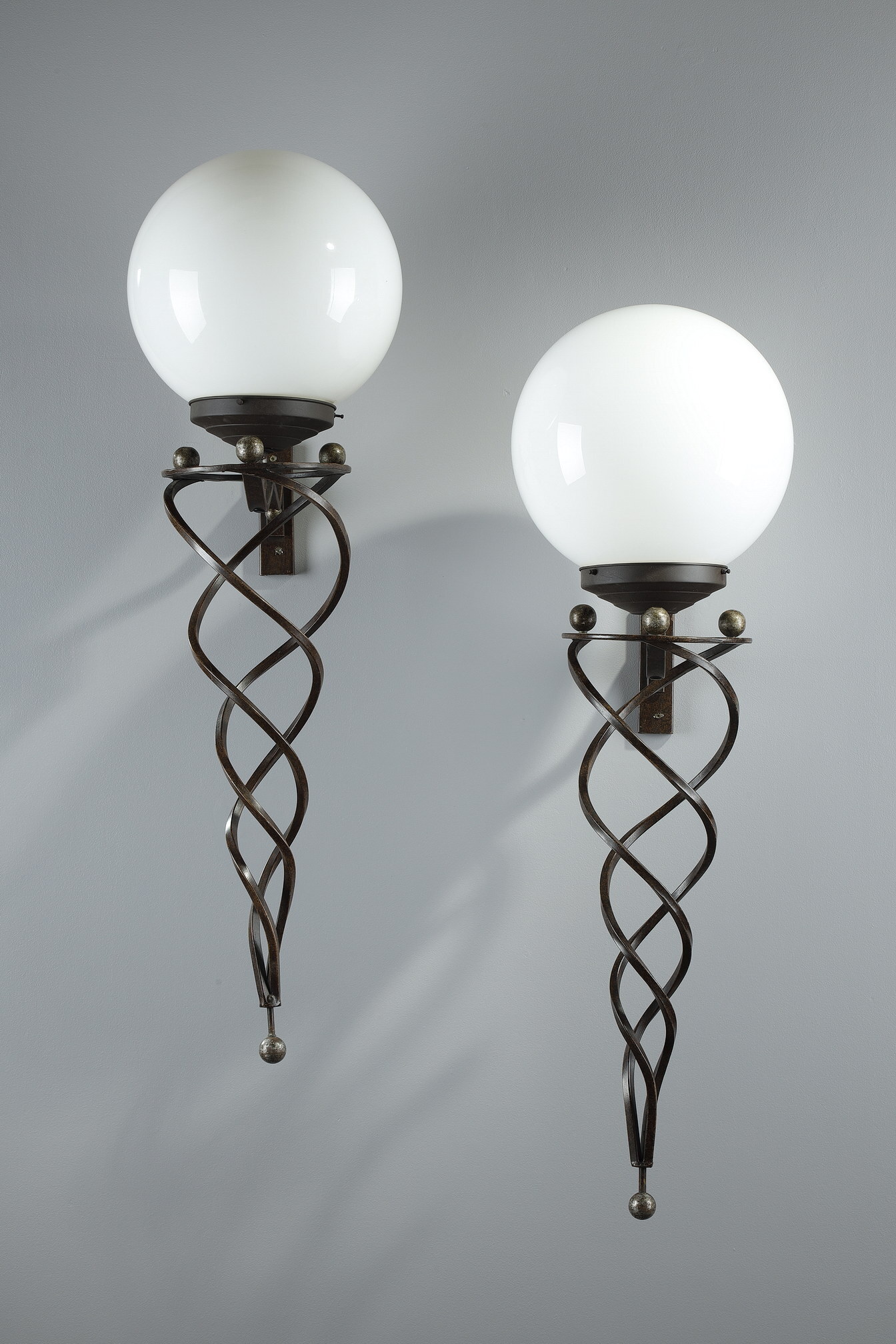Art Deco, the modernity of the Roaring Twenties
07.12.21
Who hasn't dreamed of sipping a drink in a sublime Art Deco , as if they were living in The Great Gatsby? Often considered the emblematic aesthetic of the Roaring Twenties , Art Deco is a rich artistic movement, both in the diversity of its forms and the quality of its creations. It represents the escape of a carefree youth seeking to rebuild themselves after a devastating war. But how did this style, so characteristic of an era, come about?
How did Art Deco come about?
It is "all the nervous tension accumulated and not expended during the war," said Scott Fitzgerald in Jazz Age in 1931.
However, the beginnings of this style appeared as early as the 1910s . While Art Nouveau was still all the rage, its plant-like curves were not always appreciated. Its detractors considered them indecent and ridiculous, calling it the "noodle style." They sought greater simplicity of line and more restrained forms. This was a kind of return to order, already evident in German and Viennese designs. It also stemmed from an aesthetic upheaval with Sergei Diaghilev's Ballets Russes, Thousand and One Nights, composed of dances, music, and paintings in 1909. The resurgence of the Orient as a primary source of inspiration was observed in both artistic creations and Parisian high society. The renowned Paul Poiret organized a grand costume party at his home called the Thousand and Second Night, to which numerous artists were invited. A new era was dawning. Unfortunately, the First World War broke out in 1914, interrupting all these new reflections in their momentum.
Example of an Art Nouveau desk

It was upon returning from the battlefield that Art Deco flourished. These were the Roaring Twenties , a time when young people threw themselves headlong into endless pursuits of pleasure to forget the horrors of the trenches. They sought fantasy and amusement. This led to the creation of the New Style, the modern style, or Modern Zig Zag, as it was called. It was in Paris that it gained prominence. In the capital of delights, the International Exhibition of Modern Decorative and Industrial Arts This major trade fair featured 21 countries and was visited by more than 16 million people. In eight months, it revolutionized architecture and decorative arts worldwide. This style was found in hotels, bars, ocean liners, and cinemas—luxurious and comfortable places frequented by the youth of the 1920s . The rapid spread of this aesthetic, facilitated by the development of communication technologies, was also fueled by an influx of Americans who came to take advantage of the devalued French franc. Derivatives of it can be found from Brazil to Japan and especially in the United States, which would become the cradle of the Streamline style .
Reconstruction was necessary. New cubic architecture was built with novel, geometric designs, oriented towards modernity . From buildings, motifs and ideas spread to the decorative arts. The aim was to represent modernity in motion and escapism through new, sometimes provocative, choices. There was agreement on simplifying lines, but this did not impoverish the creations. Inspiration came from all regions of the world: Japan, China, the Far East, and Africa. New exotic materials and those resulting from technological advancements were explored. The Roaring Twenties brought their share of innovations that would revolutionize the decorative landscape.
Decorations and Ornaments
In the 1920s and 30s, a new concept emerged: that of decorative artists who created unique furniture tailored to the tastes of young people. Among them were renowned figures like Ruhlmann , Jules Leleu , Paul Iribe, Maurice Dufrêne , and Charles Dudouyt , whose works are represented in our collection. Free from constraints, they were able to freely explore new forms that defined the Roaring Twenties while remaining true to the forms of the past. The aim was to modernize tradition. Art Deco represented a kind of return to order, a trend that intensified with the 1929 crisis and the global economic depression of the 1930s.
Sideboard in the style of Jules Leleu :
The topics are very eclectic and diverse, and we can only cover a superficial but essential part of them.
The most obvious change is undoubtedly the rejection of the sinuous lines of Art Nouveau . There was a shift towards a softer, more lyrical imagery. This approach to simplification stemmed initially from sober Neoclassicism before turning to the art of the avant-garde: Cubism , Orphism, and German Expressionism—though these were not always clearly distinct—all of which offered a new pictorial language. It was an evolution towards geometry , considered the essence of the modern, mechanized world. Forms were pure: circles, squares, and straight lines; chamfered edges and fragmented motifs. Nature itself lost its wildness, with synthesized forms reduced to their essence. The rose became a flattened, extremely geometric motif. Art Deco sought to tame nature by bending it to the aesthetics of the era. This is proof of the dominance of modern man, who subjugated nature through intellectual and technological progress.
 Bronze sculpture "Two Seagulls on a Wave" by Enrique Molins
Bronze sculpture "Two Seagulls on a Wave" by Enrique Molins
We also sought to represent the speed and movement of the thoroughly modern era . The automobile appeared on the streets of Paris, ocean liners allowed for increasingly rapid ocean crossings, and the dream of aviation took hold. These principles were applied to the decorations. The panther became an elegant evocation of the fluidity and spirited energy of the period. Here, you can find a bronze cast of Enrique Molins' " Two Seagulls on a Wave, which clearly demonstrates this desire to use the animal kingdom to evoke speed and technological projects. The birds' rapid dive towards the ocean alludes to the aerobatic displays that captivated audiences.
Alabaster sculpture "La Samaritaine", Art Deco
Women also took on an increasingly important role. This was the female emancipation represented by the flapper , slender silhouette was inspired by fashion designers such as Gabrielle Chanel and Paul Poiret . In art, women were reflected in their contemporary, long, and elegant outfits. They are visible in the paintings of Tamara de Lempicka or in sculptures as dancing figures accompanied by veils that they twirl around themselves. They also took the place of the goddess in antiquity, with the same stylized and elongated, almost Mannerist, canons of beauty. The figure of the Samaritan woman was particularly prominent, and many restaurants bore her name.
Finally, there was a certain fascination with ancient civilizations fueled by the numerous archaeological discoveries in Mesopotamia, Mesoamerica, and especially Egypt. Howard Carter's Tutankhamun's tomb Egyptian-style Art Deco designs . However, generic themes such as lotuses, scarabs, and hieroglyphs were primarily used.
Materials of the Modern World
The Paris Colonial Exposition reintroduced African art to the French public. Abstract motifs and dark color palettes, black and brown, were particularly memorable. But above all, it revealed a certain taste for materials, especially exotic woods like Macassar ebony and rosewood, imported from afar. These were valued for their inherent aesthetic qualities; the material itself became an ornament. This justified the use of numerous veneers and inlays of ivory, mother-of-pearl, mirrors, and shagreen (fish leather). These were luxury materials, sometimes extremely expensive. It was an extravagant display of luxury that made no compromises.
Lighting is given greater prominence to enhance spaces and signify progress. Electricity is found everywhere, from grand salons and restaurants to the comfort of one's own bedroom, with the development of numerous table lamps juxtaposing chrome and wood. Technological progress is signified through new techniques. There is a particular enthusiasm for glasswork in the early 1920s . This reflects modern , optimistic, and forward-looking tastes. In chandeliers, glass captures the movement of a frozen fountain, echoing the dynamism of the modern world.
Around the 1930s , the United States took over, and the style evolved toward greater simplicity, devoid of ornamentation. This allowed it to be adapted to the mass production of Art Deco. Art Deco became affordable to meet the needs of the Great Depression. This enabled large-scale distribution, bringing the aesthetic into every home, even modest ones. To satisfy consumer demand, materials previously unknown to the public, such as plastic and aluminum, were incorporated. Art Deco characterizes modern America in its embrace of consumerism and rampant individualism. The aesthetic reached its zenith at the New York World's Fair .
Conclusion
After World War II, Art Deco declined. It was widely criticized by a parallel movement, Modernism . Although it originated with the same 1925 exhibition, it evolved differently. Led by Le Corbusier , Modernist designers felt that the ostentatious display of luxury was no longer in good taste. The postwar period was a time of austerity marked by rationalism and functionalism. Ornament was deemed unnecessary and "should be considered suspect," said the Modernist critic Herbert Read. This art historian even went so far as to say that Art Deco should be erased from the history of art.
Fortunately, antique dealers in the 1960s disagreed. Shunned by cultural institutions, it was art dealers who rescued Art Deco furniture, which had been considered outdated and lacking historical value. Their efforts paid off, as the first retrospective, entitled " Style 1925 Union Centrale des Arts Décoratifs . This marked the beginning of widespread recognition. The term Art Deco entered common usage in the 1970s. The taste for this style grew rapidly in the 1980s, reaching a wider audience with the release of the film The Great Gatsby, starring Leonardo DiCaprio, in 2013.
Art Deco therefore has a bright future ahead of it, whether in decoration stores that produce copies, but especially for the originals that retain within them the trace of the effervescence of the Roaring Twenties .
Bibliography
- Stories of Art Deco, José Alvarez, 2010
- The Art Deco style, Ghislaine Wood, 2003
- Art Deco, 1910-1939, Tim Benton, 2003







